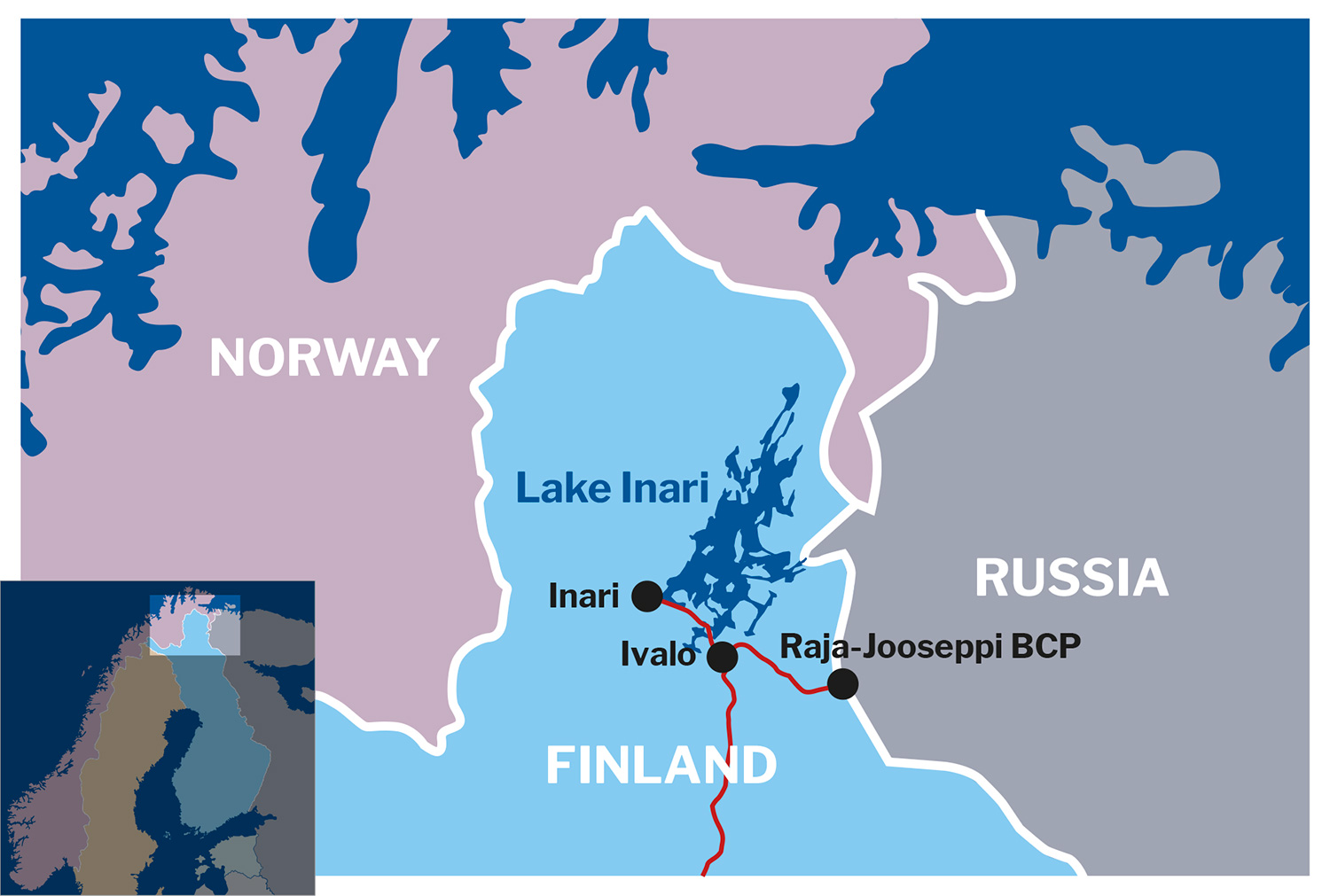
Location of Raja-Jooseppi border crossing
The Raja-Jooseppi border crossing point is the oldest, and the northernmost, of the two border crossings between Finnish Lapland and Russia. Prior to the project, its infrastructure was outdated, posing a hindrance to border crossings. The number of crossings had increased since the year 2000, reaching 80,800 in 2019. Staff from the Finnish Border Guard, Finnish Customs, and the Finnish Radiation and Nuclear Safety Authority work at this border crossing point. The old building was unhealthy for personnel, who had relocated to temporary barracks.
The project went beyond mere renovation or constructing a new building; it began with a comprehensive plan. The new border crossing point is located a few hundred meters away from the old one. It features updated traffic management arrangements, including a roofed lane check area, lane check facilities (booths), and facilities for further measures (second line). Additionally, it incorporates state-of-the-art border control technology for checks, surveillance, and customs control. An outdoor spectrometric radiation portal monitor has been installed as a secondary inspection tool for heavy traffic.
Despite a significant decrease in border crossings since 2020, the new BCP now serves border security and surveillance purposes. The modern building meets user expectations, providing safe and practical premises. The newly implemented CCTV system, along with the renewed access control system, ensures overall area surveillance and staff security at the station.

Project: Raja-Jooseppi BCP development and reconstruction; traffic arrangements, buildings and technology
Lead partner: Finnish Transport Infrastructure Agency, Helsinki, Finland
Other partners:
• Centre for Economic Development, Transport and the Environment for Lapland
• Senate Properties of Finland
• Finnish Border Guard
• Finnish Customs
• Finnish Radiation and Nuclear Safety Authority
• Fintraffic Tie Oy (former Intelligent Traffic Management Finland Ltd)
• ANCO Directorate for Development of the St. Petersburg and Leningrad Region Transport System
